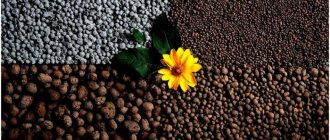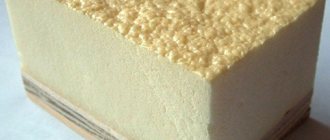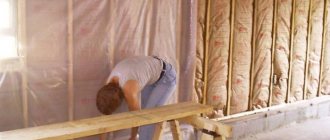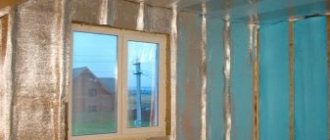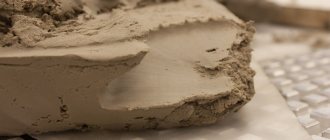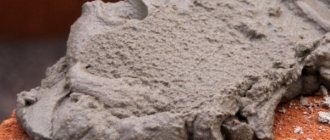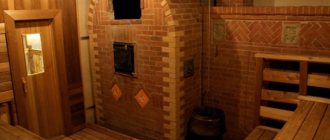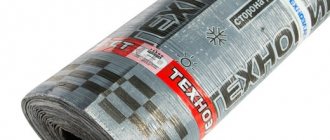Any work activity that exposes workers to construction or mineral dust can have serious health consequences for workers and anyone nearby. It is therefore important that they understand the risks and dangers associated with such work and take appropriate precautions.
This article explains what respirable dust is in construction and mines, the hazards associated with exposure, and the employer's responsibilities for controlling exposure to silica dust in the workplace.
Perlite insulation
In the modern world, there are more and more opportunities in the manufacturing sector. Technological capabilities made it possible to get acquainted with the latest material called perlite. This is a unique product that in a short time has taken a high place in the construction market.
The technology for producing perlite is quite complex. It is made from glass-like hard rock of volcanic origin. The raw material has the ability to increase significantly when heated to a certain extent. This swelling process during heat treatment, together with the addition of other materials, makes it possible to obtain heat and sound insulating raw materials with excellent characteristics.
Perlite
Types and form of release
There are four main types of perlite for thermal insulation. The material differs in the shape of the inlet and the method of application. Each type of insulation has its own advantages and technical characteristics.
Backfill insulation
The material is perlite sand, which is used to fill voids between the wall and the finish or interlayers in brickwork. This insulation allows you to completely fill all the cracks and openings, providing reliable thermal insulation.
Perlite sand is often used to level floors. It is quite light and does not create any additional load on the structures. Therefore, it can be used for any buildings. Insulation with fine-grained bulk perlite can reduce the level of heat loss by more than 40 percent.
Plates
Perlite thermal insulation material in the form of slabs is one of the most popular construction products. This type of insulation is convenient for the construction of various large structures.
To give the material the necessary qualities in the manufacture of slabs, different types of binders are used - cement, clay, liquid glass, lime, bitumen or polymers. Formed perlite is mainly used for internal insulation. This is due to the high hygroscopicity of the material. For external insulation, reliable waterproofing is required.
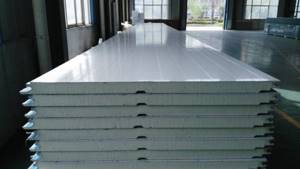
Perlite slabs
Perlite concrete slabs are especially popular. In addition to expanded perlite, they contain sand, water and Portland cement. The strength of the material depends on the ratio of the components. Ready-made perlite concrete blocks are large in size and light in weight. One product can replace three bricks. The use of such material allows not only to ensure structural strength, but also to reduce heat losses.
Roofing models
Bitumen-perlite is widely used for insulation and waterproofing of roofs. This roofing material allows you to create a reliable and fairly durable protective coating. Its thermal conductivity is only 0.067 Watt/m°C.
Bitumen perlite has high technical characteristics. Due to its flexibility, the material can be easily applied in layers to any roof structure. Perlite insulation based on bitumen is a non-flammable and safe to use thermal insulation product with high wear resistance.
Dry materials
Perlite is widely used in dry construction mixtures. It is added to improve the characteristics of gypsum, lime or cement compositions. This material is widely used in the preparation of grout for joints, putty and adhesive solutions. Quite often, dry self-leveling perlite mixtures are used when arranging floors.
Perlite plaster is in particular demand. Its technical characteristics far exceed conventional surface finishing compounds. Regardless of the degree of grain, perlite plaster is lightweight, which is especially appreciated when arranging facades.
The material is fire-resistant, does not rot and tolerates the lowest air temperatures well. Perlite plaster has high adhesion and is suitable for all types of surfaces. With the help of such finishing, you can create high-quality sound insulation and retain heat inside the room for a long time.
How to insulate a house using perlite
Perlite is used as insulation in the form of sand (bulk insulation); component in thermal insulation products and dry ready-made building mixtures.
Perlite sand as insulation for walls
Perlite sand for arranging thermal insulation of a house is an excellent material with which you can not only effectively insulate a home (heat loss is reduced by 50%), but also significantly lighten the structure of the building.
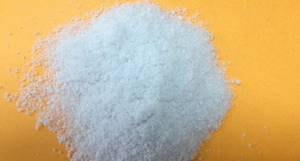
We begin installing thermal insulation from foamed perlite after part of the load-bearing wall (internal) and external brickwork (4-5 rows) have already been erected. We pour coarse expanded perlite sand (with a granule size of about 6 mm), previously dust-free, into the gap between these two walls and compact it thoroughly (the volume should decrease by 10%). We fill the sand manually or using a sandblasting machine. We repeat this operation several times until the walls are completely erected. By the way, in terms of heat-saving properties, a perlite layer about 3 cm thick corresponds to a 25 cm thick brick wall. When building panel houses, we pour sand between the sheathing sheets (internal and external).

If you are insulating an old house with voids in the walls, then backfilling with sand can be done in two ways:
- carefully pull out several bricks from the wall and pour perlite through the resulting hole;
- drill a hole in the wall (diameter 30÷40 mm) and through it, using a special installation, inject heat-insulating material.
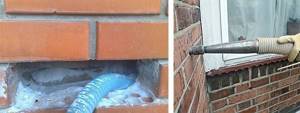
Perlite sand is a universal non-combustible building material that has a number of advantages:
- excellent sound, noise and heat insulation properties (and can be used to insulate walls made of any material);
- environmental friendliness;
- lightness (by weight);
- resistance to temperature changes;
- durability.
Advice! You should not use perlite sand, which is a very moisture-intensive material, as insulation in places with high humidity.
The only disadvantage of sand is that it is very dusty: therefore, it is recommended to slightly moisten it before use.
Floor insulation with perlite
For thermal insulation of floors, we use expanded perlite, which is poured onto the cement-sand base of the floor and leveled according to building regulations. The height of the thermal insulation layer of sand is the desired thickness plus 20% additional volume for shrinkage.
Important! The recommended minimum thickness of the perlite layer is at least 1 cm.

We embed uneven areas and pipelines in a layer of bulk material, and lay slabs and flooring on top. If there is no basement under the house, then in order for moisture to accumulate and be removed, we place drainage pipes and absorbent pads under the perlite.
Another effective way to insulate a concrete floor can be to lay a kind of “pie”: we install a perlite screed between two layers of concrete. First, prepare a perlite solution with the following components:
- cement – 1 mᶟ;
- perlite – 3 mᶟ (grade M75 or M100);
- sand – 2.2 mᶟ;
- water – 1.5 mᶟ;
- plasticizers – 3÷3.5 l.
Stir all the components of the mixture until water comes to the surface: this is a sure sign that the solution (perlite screed) is ready for use.
Advice! Since perlite is a very light material, it is recommended to carry out all work with this material indoors so that the wind does not in any way interfere with the work process.
After the perlite screed is applied to the concrete base, we leave it to harden. After 1 week we get an excellent thermal insulation layer for the floor that will last for many years. We lay a second layer of concrete on top of it.
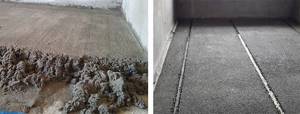
Roof insulation
If you do not intend to equip a living space in the attic, then it will be quite enough to insulate only the attic floor with expanded perlite. Otherwise, we pour perlite between the beams of the roof slope into boxes that are specially made for this purpose; then compact the sand thoroughly. The work does not require specific skills or knowledge.
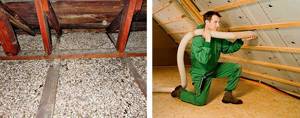
Also, for thermal insulation of sloping roofs, perlite is used, which is treated with bitumen in the factory. We add a solvent to this bituminized perlite and get an adhesive solution, with which you can create a durable thermal insulation layer.
Characteristics
Let's find out what properties and technical characteristics are typical for the type of insulating material under consideration.
- Perlite is characterized by thermal conductivity ranging from 0.043 to 0.052 W/m*K.
- The humidity level of perlite by weight is no more than 2%.
- As for the uneven distribution of grains in the structure of this insulation, there is an indicator of up to 15% of the total volume of the product.
- The moisture absorption rate here reaches 400% of the insulating material’s own weight.
The insulation in question is chemically neutral. The action of alkalis and acids does not affect it in any way. In addition, high-quality perlite does not undergo destructive rotting if it is exposed to moisture.
Dangerous microorganisms or rodents do not live in perlite. This type of heat insulator is used in a very wide range of temperature values.
It does not contain heavy metals or other hazardous components that can harm the health of living organisms.
Advantages and disadvantages
Perlite has a round shape and a characteristic shine, which makes it quite similar to pearls. Using such material as insulation has many advantages:
environmental friendliness of the material; fire safety; resistance to sudden temperature changes, which is very important for external insulation; lightness of the material; lack of odor and toxicity; relatively low cost; durability.

What does perlite look like?
The material is resistant to aggressive compounds and is not subject to corrosion or rotting. Loose insulation does not attract insects and rodents and is able to tightly fill voids, which allows you to achieve a fairly high level of sound insulation.
The disadvantage of using perlite as insulation is often considered to be the formation of dust during installation, which can be harmful to health. But this problem can be solved with the help of protective equipment.
Successful examples and options
Modern heated floors can be safely installed under any floor covering, including laminate or carpet.
If you choose a high-quality coating, then even after several years it will look like new. But it is not recommended to choose cheap materials, otherwise they may become unusable and deteriorate due to elevated temperatures. And you can install a heated floor yourself, because it is not necessary to make a concrete screed, so you can do without the help of specialists. Heated floors operate from electricity, from different types of fuel, or from a boiler. The absence of rather large batteries allows you to significantly save space in the room. This type of heating will not only warm your feet, it will evenly distribute the heat in the room.
Heated floors are an excellent way to heat a room of any size, and you can install it yourself, saving money. With such a convenient heating system, your home will always be warm.
To learn how to make a warm floor in a wooden house, watch this video.
Application of agroperlite[edit | edit code]
Agroperlite is expanded perlite of fractions 1-5 mm, most suitable for use in agriculture for the following purposes.
- For germinating seeds and rooting cuttings. Replacing water with perlite when water-rooting cuttings helps avoid their rotting. When growing seedlings of vegetable and flower crops in perlite, fungal diseases (blackleg and others) are less common. However, it must be remembered that perlite does not contain nutrients and in order to get healthy seedlings, it is necessary to water the sprouts with an aqueous solution of fertilizers and use bacterial preparations to create a special microflora. In this case, complex fertilizers should be used rather than calcium preparations, since the latter will lead to a shift in the neutral pH reaction of perlite to the alkaline side.
- For uniform distribution of seeds on the soil surface. To ensure that the seeds are evenly distributed over the surface of the soil, they are mixed with fine perlite. You can also sprinkle it on the seeds after sowing to protect them from mold and drying out. Since perlite allows some sunlight to pass through, it can be sprinkled even on light-sensitive seeds.
- For planting mixture. The use of perlite as a substrate component (up to 40%) can significantly improve the characteristics of the planting mixture. Porosity and looseness increase, which means air permeability, caking, clumping, compaction, hardening of the soil, and the formation of a surface crust are prevented. The roots develop evenly throughout the earthen coma. In addition to conditioning the soil, perlite protects the root system from external temperature changes. A substrate with perlite cools less in cold times and does not overheat during hot periods, diurnal temperature fluctuations are smoothed out. Water and nutrient solutions are absorbed by perlite (100 grams of perlite can absorb up to 400 ml of water) and are gradually released to the plant. A reduction in the number of irrigations is achieved, saving water (water losses from evaporation and drainage are reduced) and fertilizers (they are not washed out). Root rotting due to excessive watering and stagnant water is prevented. Thanks to the capillary distribution of moisture, the soil is moistened evenly. The use of perlite reduces the total weight of the soil mixture, which is most important for large-sized plants.
- For hydroponic growing of plants. Perlite is used in its pure form or as a substrate component for hydroponic growing of plants in nutrient solutions. Perlite of large fractions is used alone or in a mixture with expanded clay as a drainage layer at the bottom of the planting container.
- To increase air humidity. Well-moistened perlite of large fractions, laid out on pallets near the plants, will increase indoor air humidity during dry periods and the heating season. In this case, the water from the surface of the perlite will evaporate gradually, and the effect will not be as fleeting as after spraying.
- For mulching the top layer of soil.
- Perlite is a favorable medium for storing bulbs, tubers, corms, and rhizomes. Planting material is laid in layers, without mutual contact, sprinkled with 2-7 cm layers of perlite. This ensures protection from rotting, adverse external temperature and water influences, and premature growth.
Rinse aid “kills” the effect of active toothpaste.
The one that contains active substances designed to treat and protect your teeth and gums. You paid money for them, and then neutralized all the active components with your own hands. How? Yes, just immediately after brushing your teeth, they rinsed them with a harmful product. So to speak, they burned everything and everyone.
Remember that the people most susceptible to tooth decay are those whose mouths have minimal (or no) beneficial bacteria in their mouths and are as dry as the desert. And no, it’s not enough to just drink cool, clean water. We are talking about saliva, which contains all the necessary minerals to strengthen the enamel. It is saliva that is the natural enemy of caries. What if she doesn't exist? It's like leaving a military base without guards overnight, right?
Features and application of perlite
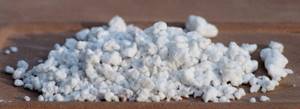
Perlite is a rock whose structure resembles pearls.
The material has a fairly wide range of applications due to its properties:
- does not rot or decompose;
- long service life;
- good heat and sound insulation;
- fireproof, non-toxic.
The use of perlite in construction increases the insulating qualities of the building, makes the structure more fireproof and reduces its weight. This material is used to make:
- Perlite filtered powder;
- Perlite sand;
- Expanded perlite;
- Agroperlite.
The material itself is used as an additive in the production of building mixtures, plasters, and paints. They also cover the floors for better sound and heat insulation. It is actively used as insulation in the metallurgical industry during lining work. In addition, it is found in the oil industry and other areas.
Perlite in building mixtures
Perlite (grades M75 or M100) is used as a component in dry mixtures (cement- and gypsum-perlite), significantly improving their properties. Application of ready-made dry perlite mixtures: for plastering work; for leveling surfaces, that is, arranging self-leveling floors.
The solution is prepared very simply: water is added to the finished dry mixture in the proportion indicated on the package. Compared to conventional plaster, perlite plaster has more effective thermal insulation (a layer of such plaster 3 cm thick in its thermal insulation properties can be equated to 15 cm thick brickwork), sound insulation, fire resistance (about 5-10 times higher), high vapor permeability, frost resistance and resistance to rotting. It is suitable for both internal and external work.
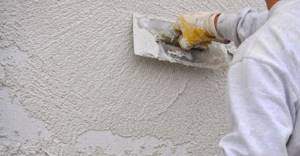
Characteristics of Perlite sand in the form of sand
Important characteristics are also positive qualities
It is necessary to emphasize the main positive qualities that perlite sand
heat insulator:
- Light weight. Despite the fact that mountain and volcanic rocks act as the initial raw materials, Perlite sand turns out to be quite light (this occurs due to thermal processing). As a result, there is no need to build a particularly reliable frame.
- Very high temperature resistance. It will withstand temperature changes from -220 to +900 degrees. Thanks to this, it can be freely used for insulation from the outside, even in the extreme north.
Main! In this nuance, he wins over all his rivals. No other heat insulator can boast of a permissible amplitude of more than 1100 degrees.
- Environmentally friendly. Even when heated, this material does not emit any toxic substances or carcinogens.
- Chemical neutrality to most acids and alkalis. This eliminates the possibility of corrosion and other unpleasant formations. It is also necessary to note that it is completely hypoallergenic.
- High sound absorption properties, which are achieved due to low bulk density. As a result, when using this heat insulator, there is no need to lay an additional layer of sound insulation.
- Does not change its initial shape during heating. Due to this, Perlite sand is often used in underfloor heating systems.
- Greater efficiency. In general, stating the specifics presented above, we can emphasize the impressive efficiency of this material. Despite the fact that it is not in great demand (relative to Extruded Polystyrene and Mineral Wool), its use seems very sensible. At the same time, the price of this material is approximately in the range.
Where is similar material used?
Such an impressive list of good qualities predetermined the wide scope of use of this heat insulator:
- External plastering of buildings. This is where resistance to frost comes into play.
- Any internal work that is associated with equalizing and increasing thermal conductivity parameters.
- Finishing inside the roof.
- Thermal insulation of pipelines (also for hot water supply).
- Heated floor systems.
The above shows only much broader areas of construction. The substance itself, called Perlite sand, is used in medicine, metallurgy, energy, agriculture, oil refining and even the food industry.

Perlite roof insulation
In world practice, perlite backfills are often used in the construction of warm sloping roofs.
1. Perlite roof backfill
First, diffusely penetrating, bottom covering boards (such as gypsum boards) are laid on the rafters. Perlite is poured into the cavity between the “cladding” and the “grid” and compacted by 10%.
During the installation of the lower roofing layer from the “lining”, a waterproof seal made of glassine or film is laid over it. The connection points with the gutter, as well as the points of passage through the roof, are hermetically sealed with thick and adhesive tape.
In addition, bitumen perlite and perlite concrete can be used for thermal insulation of the roof.
2. Perlite concrete roof insulation
Compared to other insulating materials, perlite concrete thermal insulation has high wind and fire resistance. Moreover, in combination with heat-insulating perlite-magnesium slabs or slabs covered with perlite concrete, it has high thermal resistance.
Properties of perlite concrete
| Indicator name | Unit measured | Index |
| Dry density of perlite concrete | kg/m3 | 380-480 |
| Minimum compressive strength limit | MPa | 1-8.5 |
Method of application The following materials can be used for perlite concrete roof insulation: expanded perlite, Portland cement, water, air impurities, etc. If fire protection characteristics require reinforcement, the roof can be reinforced with reinforcing mesh.
If it is fairly dry and the perlite concrete insulation can withstand the load of workers on it without damaging the surface, layers of perlite concrete insulation can be installed every 48-72 hours. The minimum recommended roof slope for normal water drainage is 1/8. The most economical way to tilt perlite concrete insulation is through the stepped arrangement of heat-insulating slabs (see Fig. %%).
Bitumen-perlite roof insulation
Bitumen perlite is a dry granular material that consists of perlite particles coated with bitumen. This is a ready-to-use material (filled from bags) and does not require additional mixing or any other impurities. A bitumen-perlite mixture can be prepared by mechanically mixing expanded perlite sand and hot bitumen. Properties of bitumen-perlite
| Indicator name | Unit | Index |
| Bulk density | kg/m3 | 180 |
| Density when compacted | kg/m3 | 250 |
| Thermal conductivity | W/m W | 0. 067 |
| High temperature resistance | WITH | 500 |
| Compressive strength | N/mm2 | 0,35 |
Scope of application: New construction. Bitumen perlite can be used directly on hard surfaces (for example, concrete) to which cold bitumen adheres well. If bitumen perlite is used over a wooden base, it is first necessary to use roofing felt attached to the wood.
Roof repair.
Bitumen perlite is the most optimal material for repairing an existing roof, since it can be used on structurally sound surfaces, free of dirt and peeling, covered with a layer of cold bitumen. Moreover, by arranging slopes to the funnels/watering cans of the internal drainage system or along the perimeter of the roof, it is possible to provide not only additional insulation of the existing base, but also to avoid stagnation of water on the roof.
Method of use Before laying the bitumen perlite base, the roof must first be prepared. The dry granular bitumen perlite is then poured out of the bags, spread and leveled to a thickness 40% higher than the final desired thickness with the desired slope. For compaction, sheets of plywood placed on the material and a roller weighing 180 kg are used. Final compaction is achieved by laying bitumen perlite with a roller directly over the material, without plywood.
Using bitumen perlite, you can form monolithic bases for different types of roofing. Since there is no need to waste time drying and hardening bitumen perlite, immediately after laying and compacting it, you can lay a roll roof using hot bitumen.
Thermal insulation boards made of perlite
Thermal insulation boards, which contain perlite sand and various binders (bitumen, lime, polymer compounds, cement, gypsum, clay, liquid glass), are manufactured by hydraulic pressing.
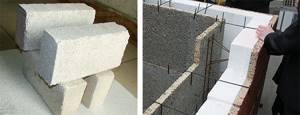
For normal positive and low negative temperatures, including areas of deep cold, perlite-bitumen products, such as slabs, are used.
The composition of perlite-bitumen slabs, which are used for thermal insulation of building structures and roofs of industrial buildings, includes perlite sand, bitumen, clay, asbestos, glue, sulfite-yeast mash (SYB) and water. Such perlite blocks can withstand temperature changes from -60 to +100 degrees Celsius and are divided into low-flammable (bitumen content is 9%) and low-flammable (bitumen content is 10÷15%).

The main advantages of insulating perlite slabs: low weight, high sound and heat insulation characteristics; resistance to rotting; resistance to deformation and mechanical stress.
Perlite or vermiculite: what to choose?
In practice, perlite is used together with vermiculite in different proportions to create soil substrates, and they are selected based on what is best for a particular crop. As a rule, the mixture also includes sand, peat, chalk, and various microfertilizers. Such substrates can often be seen on store shelves. When choosing what to use, the main criteria are:
- Perlite is advantageous to use for large irrigated, fertilized areas and hydroponics.
- Vermiculite is good where cost does not play any role, for example, for indoor flowers, seedlings, rooting cuttings, as well as for small areas, greenhouses in a country house or personal garden.
- The best results are obtained by combined substrates, where the disadvantages of cheap perlite are compensated by the advantages of vermiculite, as well as various organic and mineral components.
Sources
- https://dachnye-zametki.ru/uchastok/vermikulit-i-perlit-chto-eto-takoe-i-kak-ispolzovat-pri-vyrashhivanii-rastenij.html
- https://kamtehnopark.ru/legkij-i-procnyj-poristyj-perlitovyj-pesok
- https://gidproekt.com/chto-takoe-perlit-xarakteristika-perlita-i-oblast-ego-primeneniya-v-stroitelstve.html
- https://www.tproekt.com/ustrojstvo-teplogo-pola-v-derevannom-dome/
- https://econet.ru/articles/180346-perlit-i-perlitovyy-pesok-osobennosti-i-harakteristiki-materiala
- https://zamesbetona.ru/podgotovka/perlit-chto-jeto-takoe.html
- https://www.favoright.ru/catalog/perlit/
- https://otdelkasten.com/uteplenie/uteplenie-sten-perlitom
- https://stroyres.net/kamennye-materialy/pesok/perlitovyi
How do you like the article?

Sergey Vladimirovich
Ask a Question
Expanded perlite
Perlite, as a rock, is practically not used in construction. It acquires its unique properties only as a result of heat treatment, namely, heating at temperatures from 900 to 1100 degrees Celsius. At the same time, it swells, increases in size by 5–15 times and breaks up into small, round particles, which are called expanded perlite. Heat treatment is carried out in 1÷2 stages: it all depends on the amount of water in obsidian hydroxide. If its content is high, at the first stage, excess liquid is removed, keeping the material at temperatures of 300÷400˚C.
Foamed perlite is powder (particles less than 0.14 mm in size), sand (fraction size less than 5 mm) or crushed stone (granules 5÷20 mm in size). The density of sand is 50÷200 kg/mᶟ, and crushed stone is about 500 kg/mᶟ. The color varies from snow-white to grayish-white.

Due to its properties, expanded perlite is used in construction, the metallurgical industry, oil refining, the food industry and agriculture.
Types of reservoir drainage
To protect the foundation from flooding, different types and designs of drainage are used. By type, drainage can be areal or linear. Area drainage is located under the foundation of the building and has a continuous layer of sand and crushed stone or gravel. Linear drainage has the shape of a prism.
Depending on the degree of precipitation, the dimensions of the building and the characteristics of the soil, reservoir drainage can be single-layer or two-layer.
When installing a single-layer drainage system, crushed stone, gravel or other small stone is used. Single-layer area drainage should be 0.3-0.4 meters thick.
For two-layer area drainage, crushed stone, gravel or other small stone is also used. A bottom layer is installed from them, which is covered with filter material (geotextile). The top layer consists of sand. The thickness of the crushed stone layer must be at least 0.15 meters, and the sand layer at least 0.1 meters.
If the amount of precipitation is insignificant, the groundwater pressure is insignificant and there is a need to reduce the cost of drainage materials, then prisms cut into the cross section of sand and crushed stone can be used.
A linear single-layer drainage system made of crushed stone should have a thickness of 0.2 meters. The number of prisms that need to be installed is determined based on their soil characteristics and the depth of groundwater.
Drainage pipes, regardless of the type and design of the drainage, must be completely covered with filtration and ensure high-quality drainage.
The filter bed of the reservoir drainage must be in contact with the drainage pipe cover.
Advantages and disadvantages
So, perlite sand of various types and fractions has, of course, various strengths and has certain disadvantages. However, by grouping them together, you can structure the pros and cons of using perlite as follows:
Advantages of perlite:
- Non-flammable, has a high temperature threshold;
- High heat, sound and waterproofing properties;
- Biologically stable and inert, does not promote the proliferation of rodents and bacteria;
- Durable, environmentally friendly material;
Weaknesses of perlite and agroperlite sand:
- Such sand is not available in all construction stores, and its cost is slightly higher than similar products;
- Before use, the sand must be moistened as it generates a lot of dust;
- Its white and cream color gives certain difficulties in agriculture, especially when determining the degree of soil deterioration;
- Due to the presence of a positive electric charge, it does not take part in ion exchange.
We recommend: Installation of shut-off valves: detailed instructions
Mulching garden soil
This is the best way to prevent the formation of a hard crust on the soil. What is it for? An experienced gardener will immediately answer that such formation prevents oxygen from reaching the roots, and also significantly accelerates the drying of the soil. It’s not for nothing that loosening is called dry watering. But the gardener usually simply does not have enough time to break up the crust that forms after watering. To prevent this, the soil is mulched, that is, covered with a layer of humus or, in other words, mulch.
Perlite can also play this role. But its cost today can hardly be called low, so substitutes are most often used. If the choice fell on perlite, then do not forget that it is not recommended to add it to the tree trunk. This place is left free and watering is carried out through it.
Operational life
Perlite chips have excellent performance qualities. It has been performing its functions for many years, maintaining its original condition without losing its visual appeal.
The service life of perlite is unlimited, unless it is damaged mechanically.
Perlite has high physical and technical properties, which is why it is so in demand; it is the best among thermal insulation materials.
When purchasing, you need to be vigilant - it is not so easy to find expanded perlite chips on the market and unscrupulous sellers can pass off a fake as real perlite.
Comparison of perlite with other thermal insulators
To thoroughly understand all the advantages of this material, it is necessary to compare it with existing analogues:
- Vermiculite. The production technology of this heat insulator is similar. However, having a porous structure, this material has higher thermal conductivity. In addition, it is more expensive in price;
- Expanded polystyrene. It is difficult to fill cavities in walls with this heat insulator. In addition, it is flammable and releases toxic substances when burned;
- Expanded clay. It is considered one of the most common insulating materials. And although it is as cheap as perlite, its thermal conductivity is 2 times higher than the latter. However, it is completely unsuitable for thermal insulation of door and window openings;
